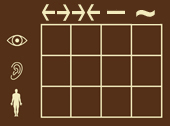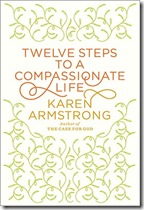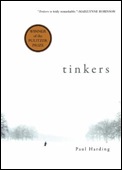A Marriage of Marriages
 Wednesday, August 22, 2012 at 07:57AM
Wednesday, August 22, 2012 at 07:57AM  Un mundo (A World), Ángeles Santos Torroella, 1911
Un mundo (A World), Ángeles Santos Torroella, 1911
The current understanding of work-life balance is too simplistic. People find it hard to balance work with family, family with self, because it might not be a question of balance. Some other dynamic is in play, something to do with a very human attempt at happiness that does not quantify different parts of life and then set them against one another. We are collectively exhausted because of our inability to hold competing parts of ourselves together in a more integrated way. These hidden human dynamics of integration are more of a conversation, more of a synthesis and more of an almost religious and sometimes almost delirious quest for meaning than a simple attempt at daily ease and contentment.
Human beings are creatures of belonging, though they may come to that sense of belonging only through long periods of exile and loneliness. Interestingly, we belong to life as much through our sense that it is all impossible, as we do through the sense that we will accomplish everything we set out to do. This sense of belonging and not belonging is lived out by most people through three principal dynamics: first, through relationship to other people and other living things (particularly and very personally, to one other living, breathing person in relationship or marriage); second, through work; and third, through an understanding of what it means to be themselves, discrete individuals alive and seemingly separate from everyone and everything else.
These are the three marriages, of Work, Self, and Other.
A word about this word marriage: Despite our use of the word only for a committed relationship between two people, in reality this book looks at the way everyone is committed, consciously or unconsciously, to three marriages. There is that first marriage, the one we usually mean, to another; that second marriage, which can so often seem like a burden, to a work or vocation; and that third and most likely hidden marriage to a core conversation inside ourselves. We can call these three separate commitments marriages because at their core they are usually lifelong commitments and, as I wish to illustrate, they involve vows made either consciously or unconsciously.
Why put them together? To neglect any one of the three marriages is to impoverish them all, because they are not actually separate commitments but different expressions of the way each individual belongs to the world.
This book looks at the dynamics common to all three marriages: first the recognition of what an individual wants, then a pursuit, then the hope to circumvent the difficult but necessary disappointments, and ultimately, in the face of that disappointment, the full recommitment to the vows we have made in each of the three areas, spoken or unspoken.
The Three Marriages looks at the way each marriage involves a separate form of courtship and commitment, each almost a world unto itself that then must be rejoined together. The end goal: In these pages I am looking for a marriage of marriages.
The main premise of the book becomes also its final conclusion: We should stop thinking in terms of work-life balance. Work-life balance is a concept that has us simply lashing ourselves on the back and working too hard in each of the three commitments. In the ensuing exhaustion we ultimately give up on one or more of them to gain an easier life.
I especially want to look at the way that each of these marriages is, at its heart, nonnegotiable; that we should give up the attempt to balance one marriage against another, of, for instance, taking away from work to give more time to a partner, or vice versa, and start thinking of each marriage conversing with, questioning or emboldening the other two. As we discover, through the lives and biographies I follow in this book, how each one of the three marriages is nonnegotiable at its core, we can start to realign our understanding and our efforts away from trading and bartering parts of ourselves as if they were salable commodities and more toward finding a central conversation that can hold all of these three marriages together.
…
The understanding of this book is that the deeper, unspoken realms of the human psyche, work and life are not separate things and therefore cannot be balanced against each other except to create further trouble. The book most especially tries to dispel the myth that we are predominantly thinking creatures, who can, if we put our feet in all the right places, develop strategies that will make us the paragon of perfection we want to be, and instead, looks to a deeper, almost poetic perspective, a moving, more untouchable identity, a slightly more dangerous but more satisfying sense of self than one defined by ideas of balance.
The Three Marriages looks at the way we actually seem to function – as a kind of movable conversational frontier, an edge between what we think is us and what we think is not us…it tries to illustrate the way we can still make a real life even when crowded by other identities, or even when unbalanced and intoxicated with desire, or even when we are disappointed in work or love, and perhaps the way, at the center of all this deep love of belonging and this deep exhaustion of belonging, we may have waiting for us, at the end of the tunnel, a marriage of marriages, a life worth living, and one we can call, despite all the difficulties and imperfections, our very own.
~ David Whyte, from The Three Marriages: Reimagining Work, Self, and Relationship
See also:
 David Whyte,
David Whyte,  balance,
balance,  excerpt,
excerpt,  marriage,
marriage,  relationships,
relationships,  self,
self,  self/other,
self/other,  vocation,
vocation,  workplace
workplace 







 The purpose of mindfulness…is to help us detach ourselves from the ego by observing the way our minds work. You might find it helpful to learn more about the neurological makeup of the brain and the way that meditation can enhance your sense of peace and interior well-being…but this is not essential. Practice is more important than theory, and you will find that it is possible to work on your mental processes just as you work out in the gym to enhance your physical fitness.
The purpose of mindfulness…is to help us detach ourselves from the ego by observing the way our minds work. You might find it helpful to learn more about the neurological makeup of the brain and the way that meditation can enhance your sense of peace and interior well-being…but this is not essential. Practice is more important than theory, and you will find that it is possible to work on your mental processes just as you work out in the gym to enhance your physical fitness.  Your cold mornings are filled with the heartache about the fact that although we are not at ease in this world, it is all we have, that it is ours but that it is full of strife, so that all we can call our own is strife; but even that is better than nothing at all, isn’t it? And as you split frost-laced wood with numb hands, rejoice that your uncertainty is God’s will and His grace toward you and that that is beautiful, and part of a greater certainty, as your own father always said in his sermons and to you at home. And as the ax bites into the wood, be comforted in the fact that the ache in your heart and the confusion in your soul means that you are still alive, still human, and still open to the beauty of the world, even though you have done nothing to deserve it. And when you resent the ache in your heart, remember: You will be dead and buried soon enough.
Your cold mornings are filled with the heartache about the fact that although we are not at ease in this world, it is all we have, that it is ours but that it is full of strife, so that all we can call our own is strife; but even that is better than nothing at all, isn’t it? And as you split frost-laced wood with numb hands, rejoice that your uncertainty is God’s will and His grace toward you and that that is beautiful, and part of a greater certainty, as your own father always said in his sermons and to you at home. And as the ax bites into the wood, be comforted in the fact that the ache in your heart and the confusion in your soul means that you are still alive, still human, and still open to the beauty of the world, even though you have done nothing to deserve it. And when you resent the ache in your heart, remember: You will be dead and buried soon enough.  To confess my unlikely Catholicism in
To confess my unlikely Catholicism in 